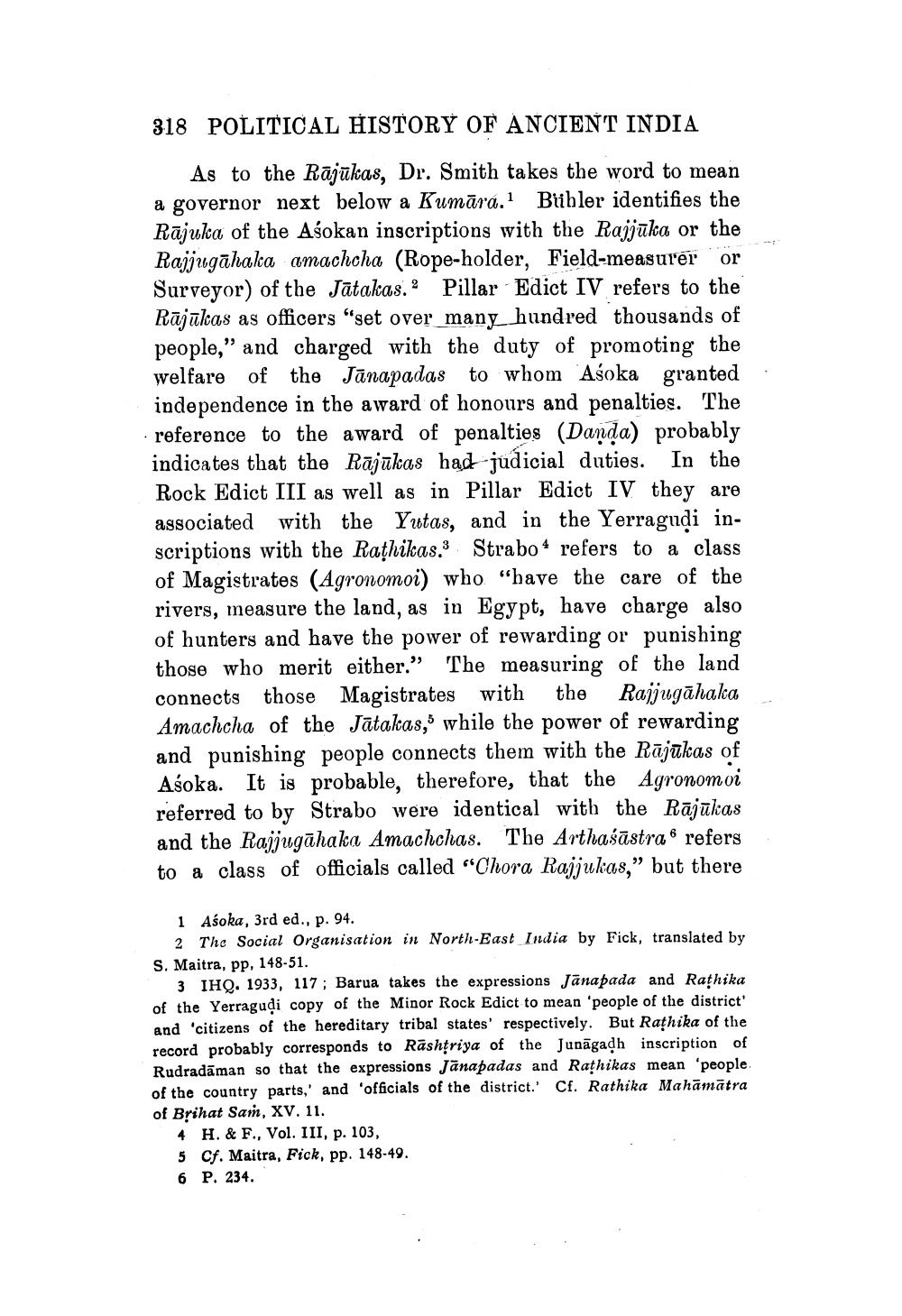________________
318 POLITICAL HISTORY OF ANCIENT INDIA
As to the Rājūkas, Dr. Smith takes the word to mean a governor next below a Kumāra.Bübler identifies the Rājuka of the Asokan inscriptions with the Rajjūka or the Rajjugāhaka amachcha (Rope-holder, Field-measurer or Surveyor) of the Jātakas. 2 Pillar Edict IV refers to the Rajūlas as officers “set over many_hundred thousands of people," and charged with the duty of promoting the welfare of the Jānapadas to whom Aśoka granted independence in the award of honours and penalties. The reference to the award of penalties (Danda) probably indicates that the Rājukas had judicial duties. In the Rock Edict III as well as in Pillar Edict IV they are associated with the Yutas, and in the Yerraguồi inscriptions with the Rathikas. Strabo* refers to a class of Magistrates (Agronomoi) who "have the care of the rivers, measure the land, as in Egypt, have charge also of hunters and have the power of rewarding or punishing those who merit either.” The measuring of the land connects those Magistrates with the Rajjugāhaka Amachcha of the Jātakas, while the power of rewarding and punishing people connects them with the Rājukas of Asoka. It is probable, therefore, that the Agronom vi referred to by Strabo were identical with the Rājākas and the Rajjugāhaka Amachchas. The Arthaśāstra 6 refers to a class of officials called "Chora Rajjukas,” but there
1 Aśoka, 3rd ed., p. 94.
2 The Social Organisation in North-East India by Fick, translated by S. Maitra, pp, 148-51.
3 IHQ, 1933, 117; Barua takes the expressions Janapada and Rathika of the Yerragui copy of the Minor Rock Edict to mean 'people of the district and 'citizens of the hereditary tribal states' respectively. But Rathika of the record probably corresponds to Rashtriya of the Junāgadh inscription of Rudradāman so that the expressions Jānapadas and Rathikas mean 'people of the country parts,' and 'officials of the district.' Cf. Rathika Mahāmātra of Brihat Sam, XV. 11.
4 H. & F., Vol. III, p. 103, 5 Cf. Maitra, Fick, pp. 148-49. 6 P. 234.




